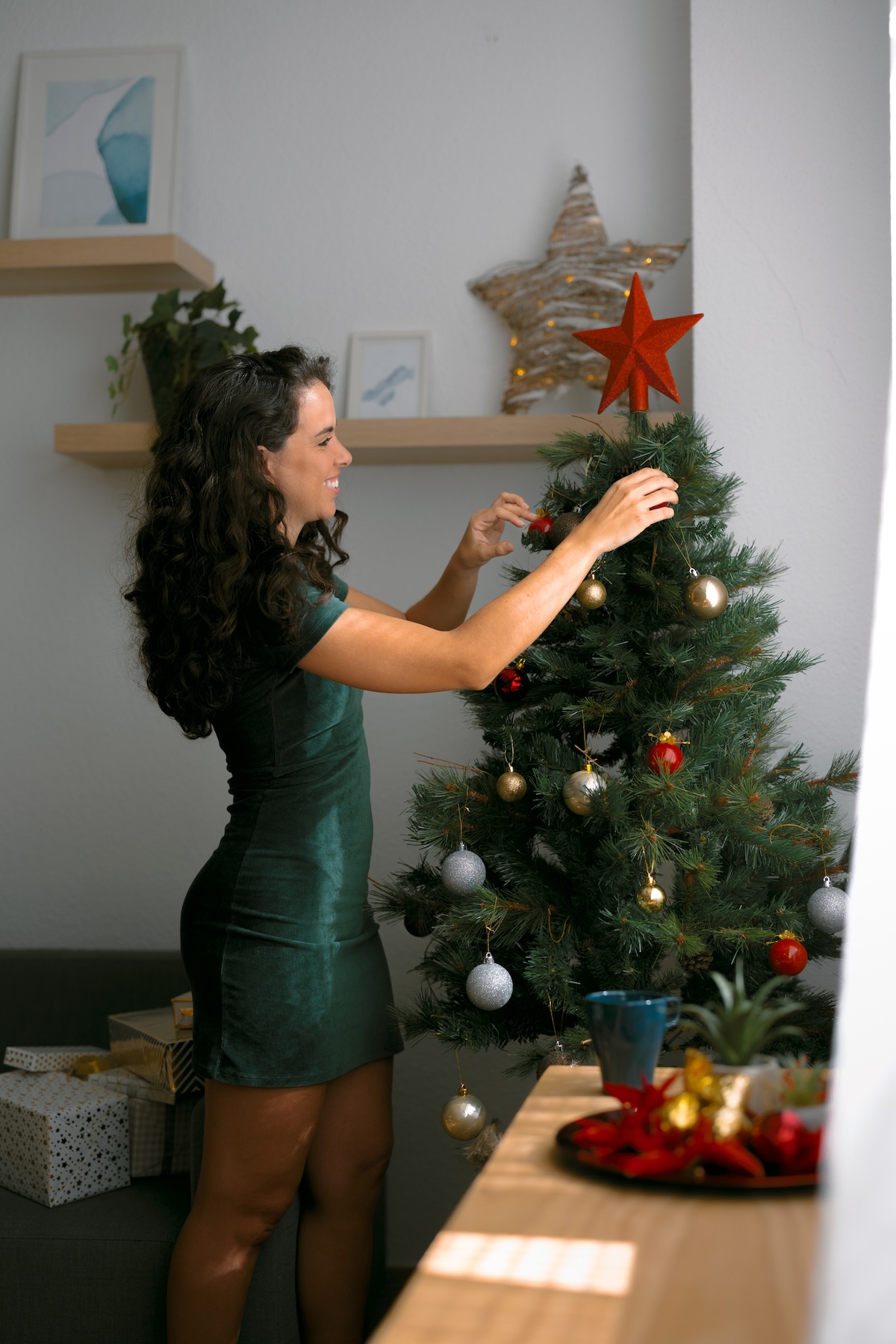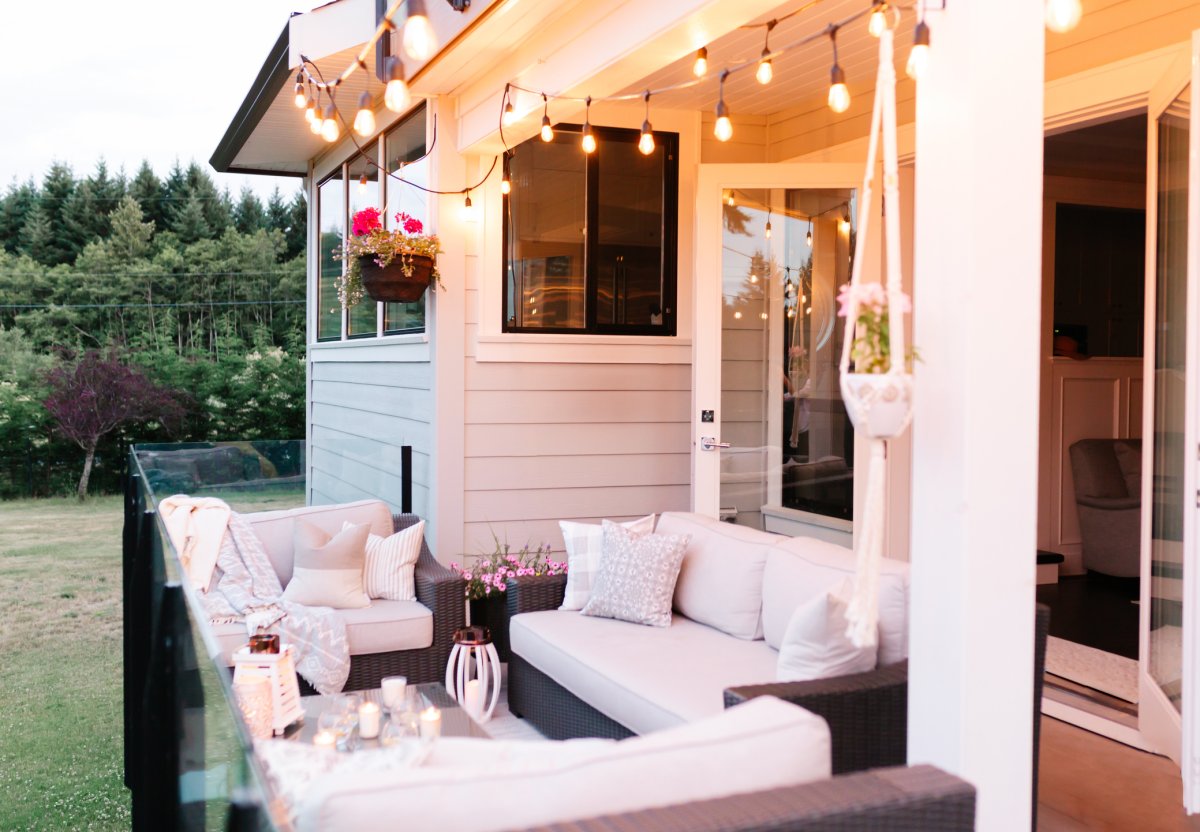

We may earn revenue from the products available on this page and participate in affiliate programs. Learn More ›
Forget the debate over whether to buy a real or artificial Christmas tree. You can now rent a Christmas tree each holiday season to save yourself work, time, and storage space—all while making a more sustainable choice.
About 10 million artificial trees are purchased each season in the United States, and 90 percent are shipped from China, according to The Nature Conservancy. This process uses up resources and releases carbon emissions. In addition, most artificial trees are made from plastic that can’t be recycled, so they eventually end up as waste in landfills.
While buying a real Christmas tree from a tree farm might be slightly better for the environment, the trees still end up as trash if they aren’t turned into compost or mulch. That’s why it might be time to consider renting one.
Some tree farms and other vendors are now offering the option to rent a tree for the holiday. Here’s everything you need to know about Christmas tree rental, including how it works, the pros and cons of this innovative option, and other ways you can choose more sustainable décor this holiday season.

Why Rent a Christmas Tree?
Imagine not having to trek to the tree farm or pop-up vendor, transporting a heavy tree to your home, and then worrying about disposing of it once the holiday is over. Renting a tree is certainly more convenient. It also brings the feel of a real living tree without any long-term obligation, says Mathew Wilson, horticulturist with Handy Gardeners in London.
Renting is also a more eco-friendly option than buying a new tree every year. “Some people love to use a rented Christmas tree because they are eco-friendly and require no effort to dump the waste after Christmas,” explains Wilson. “A tree that is rented instead of bought is replanted…hence minimizing the number of trees that go to the landfill. In addition, when the trees are replanted, a resource is not lost as the trees keep absorbing carbon dioxide and releasing oxygen,” he says.
According to the Rent a Living Christmas Tree website, the company returns the rented trees to the company’s forest nursery after the holidays, where they continue to produce oxygen, contribute to the ecosystem, and serve as wildlife habitat. The company also prides itself on offering only native tree species.
Other really important benefits of renting a tree include saving space and preventing a mess. “It is suitable for anyone with little room space, those living in temporary places, or those that do not want to create a holiday mess,” says Wilson. Unlike cut trees, live trees don’t drop needles that need to be cleaned up. And you won’t need to worry about storing an artificial tree all year if you are renting one annually.
How to Rent a Christmas Tree
While tree rental is more popular in the United Kingdom, it is now available in some areas of the United States. Rent a Living Christmas Tree serves the San Francisco Bay area and central coast of California, The Living Christmas Company rents Christmas trees to customers in southern California. and Christmas Décor serves customers in South Carolina. If you don’t live in those areas, check with local Christmas tree farms and nurseries to see if they have rental options available.
The process of getting a tree is pretty simple, says Wilson. “There are many companies that have an online system where you select the size of the tree and the delivery date, and the tree is then delivered to the location of your choice,” he says. You also often have the opportunity to choose from a variety of species and price points.
Typically, the company delivers the tree to your home at your convenience, which means you don’t have to worry about transporting or carrying it. You’ll receive instructions on caring for the tree while it’s in your home to ensure it stays healthy and flourishes throughout the holidays.
“Most rentals are between 3 and 5 weeks; this covers the entire holiday period,” says Wilson. It’s also similar to how long a cut tree from a lot can last. Customers also can choose the tree pickup date; Wilson says most companies allow customers to choose dates based on when they plan to use the tree.
The company then returns to your home to pick up the tree once the season is over and either re-pots or replants it for future use. This eliminates waste and the need for customers to figure out how to dispose of the tree.

Drawbacks to Keep in Mind
Wilson points out that the price of renting a tree could be a challenge for some. “It is much more expensive to rent a tree as opposed to acquiring an artificial one,” he says. The rental fee is something that occurs every year as opposed to a one-time purchase of an artificial tree.
Another major concern is the limited availability of tree rental companies throughout the United States. Right now, tree rental is still not accessible in many geographic locations.
Another issue to keep in mind, says Wilson, is to read the conditions attached to renting and caring for a Christmas tree while it’s in your possession. When you rent a tree, it’s still someone else’s property and you need to be mindful of the instructions to ensure the tree does not wither and die while in your home.
Finally, most people don’t realize that renting a living Christmas tree means you won’t get to enjoy the fresh pine scent of a newly cut tree.
Additional Sustainable Holiday Décor Ideas

Besides renting a Christmas tree, here are some other ways to go green this holiday season:
- Set the mood with energy-efficient lights. To light up your Christmas tree, choose LED string lights instead of incandescent ones. Not only do they last 25 times longer, but LEDs use at least 75 percent less energy than incandescent lights, according to the U.S. Department of Energy.
- Choose a living Christmas tree. If you prefer to keep your tree after the holiday season, consider purchasing a living Christmas tree that you can replant in your backyard. Living Christmas trees are live trees with their roots still attached. They are typically sold either in containers or with their roots “balled and burlapped,” which means that the root ball of the dug-up tree has been bundled up in burlap or another fabric to allow for later replanting. Local nurseries around the country offer the option of buying a potted living tree.
- Use what’s in your garden to decorate for the holidays. Save money and cut down on waste by using what you have growing in your yard. Fill a bowl with freshly grown produce from your garden as a table centerpiece; create arrangements from flowers and greenery picked from your yard; and collect leaves, sticks, pine cones, and other natural elements to make DIY décor items like wreaths, gifts, and wall art.
- Repurpose old Christmas decorations. Instead of putting decorations away as soon as the holiday ends, find ways to use them year-round: reuse greenery like pine branches or holly to enhance your table settings or gift wrapping; hang Christmas lights in your backyard or balcony for relaxing mood lighting throughout the seasons; and use holiday tins and gift boxes for organizing and storing items.
